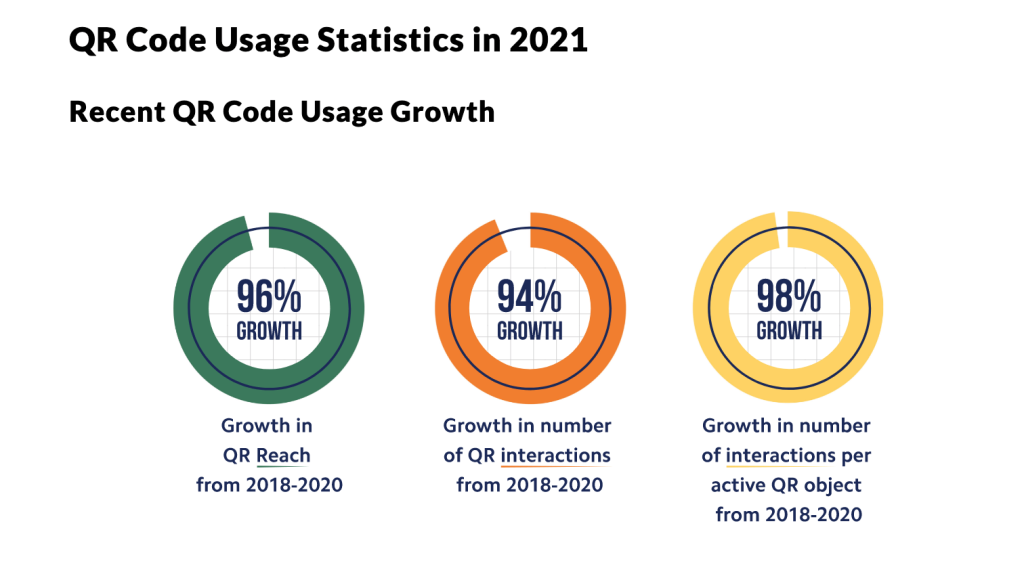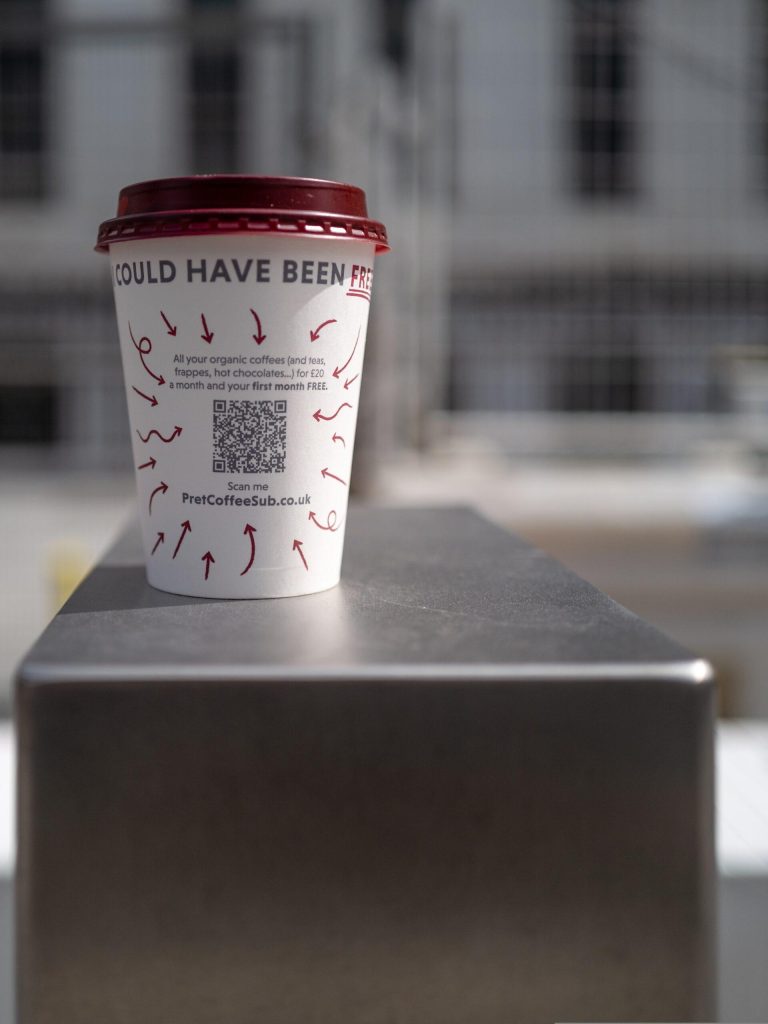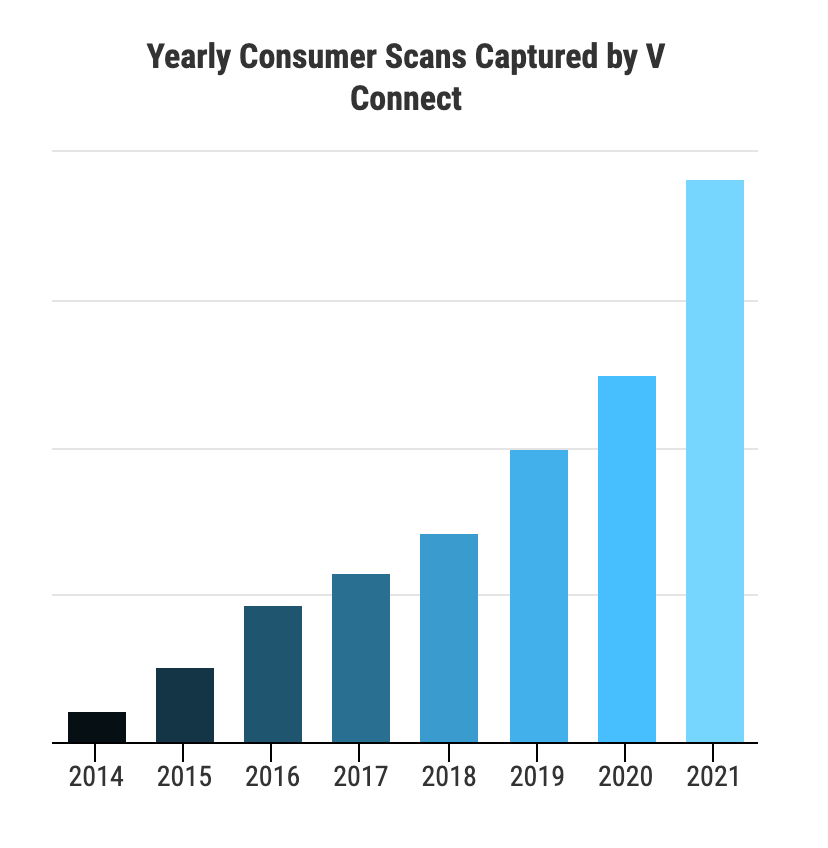
Late to the Party
A short history of the QR Code
Throughout the pandemic, the way we interact in our day-to-day spaces has changed dramatically. With the rising importance of “social distancing”, technology has had to adapt to meet our evolving needs. QR codes, “small, two-dimensional matrix codes.. that can be scanned by a camera to acquire information”—something many of us had seen, but few of us had used prior to the pandemic—have cropped up everywhere from doctor’s offices to the tables of our favorite restaurants. And for good reason.
QR codes are easily produced, and provide a direct link to information, making them an ideal choice for both disseminating and accessing information quickly and without needing any additional app or software. While mainstream adoption of QR codes by US consumers happened during COVID, QR codes have been around since the mid-1990s when Japanese engineer Masahiro Hara invented them.
“QR Codes did start getting popular in 2011 when Macy’s and Best Buy started implementing them in their stores. But there were problems galore with mass end-user adoption. Most consumers had terribly slow speed internet, did not own a smartphone and even when they did, they had to download an app that took forever to scan a QR Code.”
So what’s changed in the last decade? Smartphone prevalence has continued to rise, and with Apple’s integrated QR code identification in their IOS11 update, QR code reading capabilities became available to the vast majority of us via our camera. “2.71 billion people are using smartphones in 2019 and 90% of the population is estimated to have access to high-speed internet by 2021,” setting the groundwork for QR Codes to “become an integral part of everyday life”. These handy little boxes have been used for everything from sharing food menus to sharing travel forms in airports, but did you know it’s also a great data collection tool? For example, “if someone tests positive for Covid-19 at that venue, then other visitors to the location are alerted by an app thanks to the data accumulated from QR code scans”.

Knowledge is Power
Using QR codes to empower your consumer, and your decision making

This last year has seen unprecedented growth in consumer adoption of QR code usage. “Scanbuy, Inc., the global leader in mobile engagement and marketing, today released its quarterly trend report that summarizes consumer engagement activity during Q1 2021. The trend report shows 136% growth in unique consumers engagement, demonstrating continued strong growth of QR codes and mobile consumers engagement”.
Now is a better time than ever to implement this technology to connect with your consumers. One exciting area we’ve seen the adoption of QR codes expand is via coffee packaging. Companies like Starbucks, Ethical Bean Coffee, and 1850 Coffee have all adopted QR codes to educate their consumers on where their beans are coming from—further enhancing their commitments to ethical sourcing, and letting their consumers in on that process.
Especially for industries, like the coffee and fashion industry, that have been particularly rife with ethical sourcing and environmental concerns, “including a QR code on your product packaging can be beneficial to your customers and create loyalty and trust with them”. It’s been shown that consumers are willing to pay top dollar for brands who are able to prove traceability in their supply chain, and doing so will only increase their likelihood in continuing their support.


Aside from educating on sourcing, there’s a huge variety of ways you can utilize QR codes on your products and product packaging—“the QR code may give buyers a PDF or a video with instructions on how to use the product”, link out to a related product page, or link to a video sharing the company’s origin story (B2C). All are ways you can further educate your consumer about both your brand, and the product they have purchased from you. “Adding a QR code is a form of a call to action placement (CTA). This is a simple and effective way to encourage potential customers to engage and drive traffic to your business website” (B2C). Whatever your goals are—whether it be to increase traffic to a particular page on your site, encourage consumer education around product usage, or share a story—QR Codes are an easy way to get the relevant information, quite literally, in your customer’s hands.
One of the best reasons to use QR codes is because they give you access to valuable consumer insights. Say you have a customer who buys a pair of shoes, and scans the QR code on the tongue when they receive them. They’re then directed to a page on your site, explaining the performance benefits of the shoe, with links to also-bought products at the bottom. They click on a few of the cross-marketed products, and now you have additional data on how to better tailor ads to this person moving forward.

It’s a Personal Thing
Using Vi3’s technology to personalize your customer‘s experience
QR codes are relatively easy to produce and incorporate, and even easier for a customer to use. “Their portability and accessibility make QR a potent tool for both attractive and satisfying customers. Smart networkers and marketers use them to promote a brand, product or event”.
The technology that allows QR codes to be such a helpful tool for companies is their hyper-uniqueness. “They can hold a massive amount of data compared to standard barcodes – up to 2,500 numeric characters compared to a barcode’s 43”. Each QR code is so unique that, utilizing Vi3’s platform, you’re able to securely pinpoint the entire life cycle of a single product and connect with the individual consumer directly, while being alerted to any duplicitous scans, indicating potential counterfeit activity, in real time. This way, you’ll know that all the data you’re collecting is 100% yours and securely protected via our blockchain technology.
By utilizing Vi3’s suite of tools, you’ll be able to get the most out of your QR code incorporation—beginning at the product’s source and ending in the hands of the consumer. V Connect allows you to personalize your customer’s experience after purchase, while collecting valuable data that will help you better serve the individual consumer moving forward. Personalization is paramount these days, and at the core of that is data collection. There are many ways to gather consumer data, but few are so simple and seamless as QR code integration into the product itself.

With the pandemic fueling the normalization of QR code usage, the uses for this technology are only going to grow. At Vi3, we’ve seen a huge uptick in consumer QR scans in the last year, with projected growth for 2021 being almost double what it was between 2019 and 2020. V Connect allows you to utilize the same technology you would use to accomplish your supply chain traceability and anti-counterfeit measures, and make significant headway in your consumer marketing personalization as well. With all the talk around collecting consumer data these days, it’s important to recognize the ways in which that process could be more reciprocal. Using QR code technology, you can empower your consumers, while further tailoring their experience for the future. Sounds like a win-win to me.